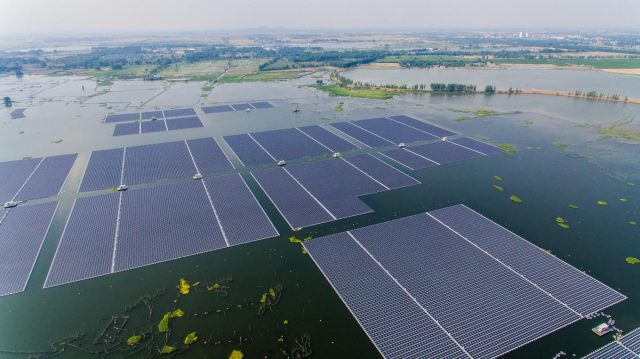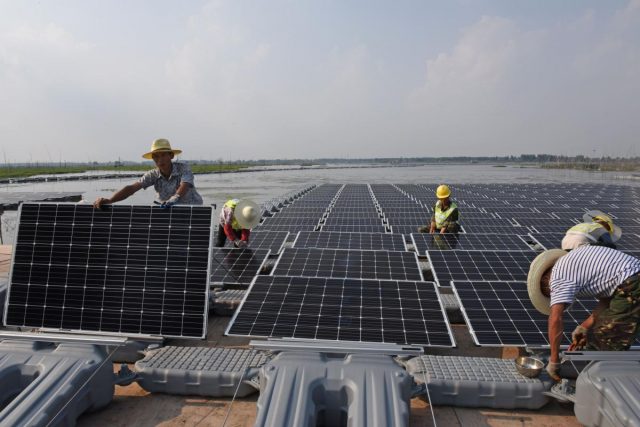Floating Solar Arrays Are the Wave of the Future
21st-century technology is helping us address our shared challenges in a variety of exciting ways. We have long known about harnessing the power of the sun’s rays to provide energy, but one of the newest innovations in the solar industry is floating solar arrays.
Floating solar arrays have been in use for a little over a decade, and they are now becoming increasingly popular as the cost of solar panels continues to drop, and the solar market experiences explosive growth as a result.
Large solar installations are already operating in countries such as Australia, China, Japan, France, Singapore and the United States, and there are many more planned or under construction in coming years.

A huge 40 MW solar farm in China’s eastern province of Anhui, floating over a flooded former coal mine.
The Advantages of Floating Solar Panels
As proponents of floating solar arrays have pointed out, there are many advantages of locating solar panels on water. In many areas, building on water is much less expensive than buying or renting a large tract of land. There are also fewer regulations for structures built on reservoirs, water treatment ponds and other bodies of water not used for recreation. Unlike most land-based solar plants, floating arrays are easier to hide from public view, as well.

The floating arrays have other assets. They help keep water from evaporating by blocking sunlight before it hits a reservoir’s surface, which makes more water available for drinking and irrigation – a boon for drought-plagued areas. Solar systems installed on water are also cooler due to evaporating water, which causes them to operate more efficiently. According to a study by Korea Water Resources Corporation, a floating array could be 11 percent more productive than land-based systems.
How Floating Solar Panels Work
Floating solar panels are attached to a network of plastic rafts that allow them to stay on top of the water. The structures often feature floating walkways among the rafts to make it easier for workers to access and maintain the solar panels.
To operate safely on the water, the materials used to construct floating solar arrays need to be certified for use in marine environments. Floating solar arrays also need to include several key features that protect them from weather conditions, including a special coating that prevents corrosion.

Rows of buoys with solar panels
The connections between the floating panels also need to be strong enough to allow the arrays to stay together and prevent panels from going adrift. In case the water freezes, there has to be some flexibility in the anchoring system that allows them to rest on top of ice. The design of newer arrays allows them to withstand small waves and relatively strong winds.
While solar panels aren’t quite advanced enough to resist damage from sea salt and tall waves, technological advancements may allow the installation of solar arrays on the open ocean in the future. Until then, lakes and reservoirs provide an ideal location for these large systems.
As the technology behind floating solar arrays advances further, the demand for them will increase, as well. There is great potential for this technology in any area with large bodies of water, and the future looks bright for the solar industry.




